Wearever Advertising on Railway Express Agency Trucks c1946-1947
by Jim Mamoulides, February 20, 2017
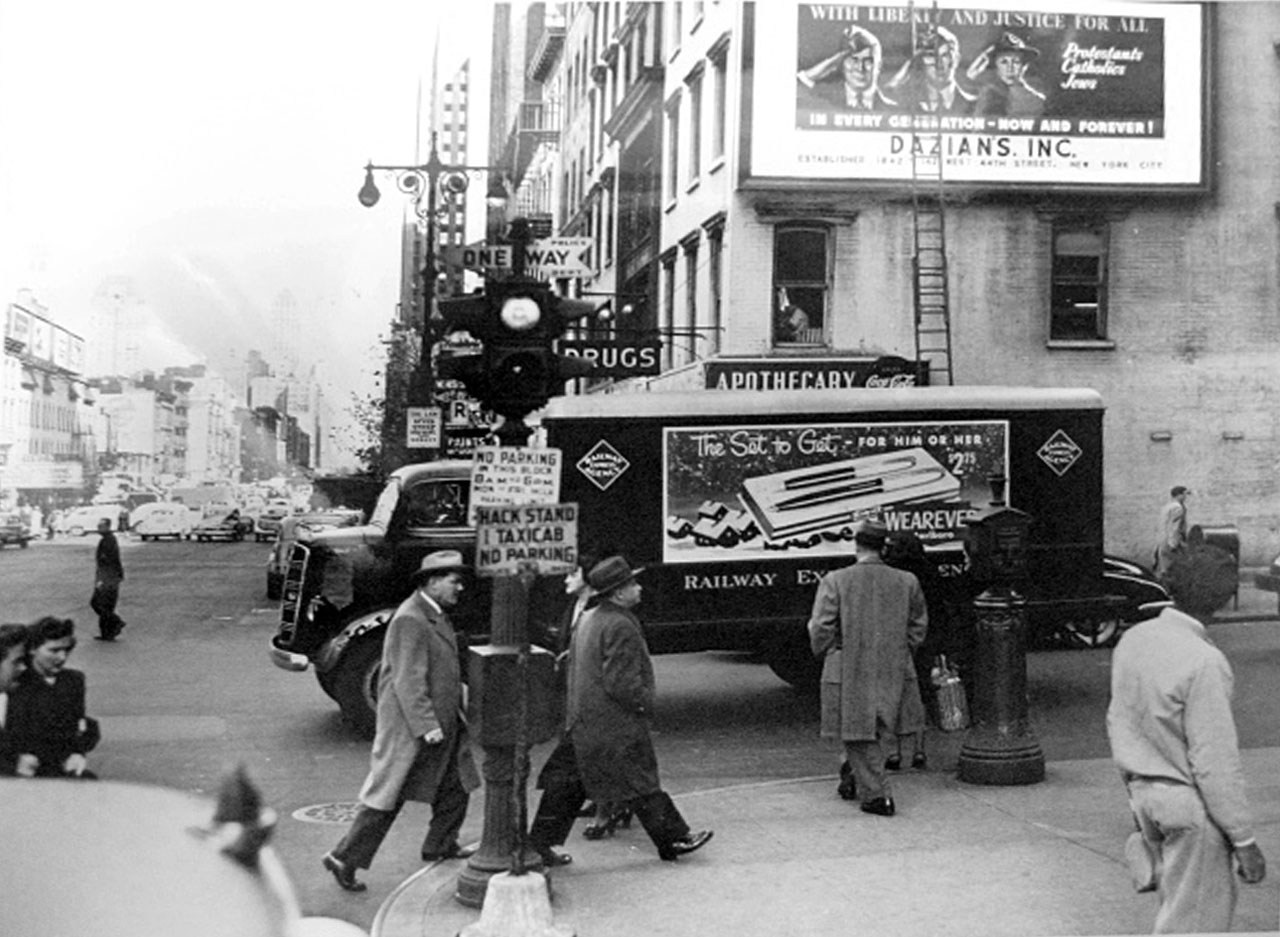 Wearever Post World War II Advertisement on Railway Express Agency Truck
Wearever Post World War II Advertisement on Railway Express Agency Truck
A rolling campaign for Wearever
In August, 2015, after a trip to the Washington, D.C. Pen Show, I was contacted by Tom Heath, who furnished the photos in this article. He told me they represented an advertising campaign on the sides of Railway Express Agency delivery trucks in New York City by David Kahn, Inc. for its newest Wearever pen lines. Also included in the set of undated photos was one of a store display. This was going to be a forensic adventure until Tom and I could meet and I could get more data.
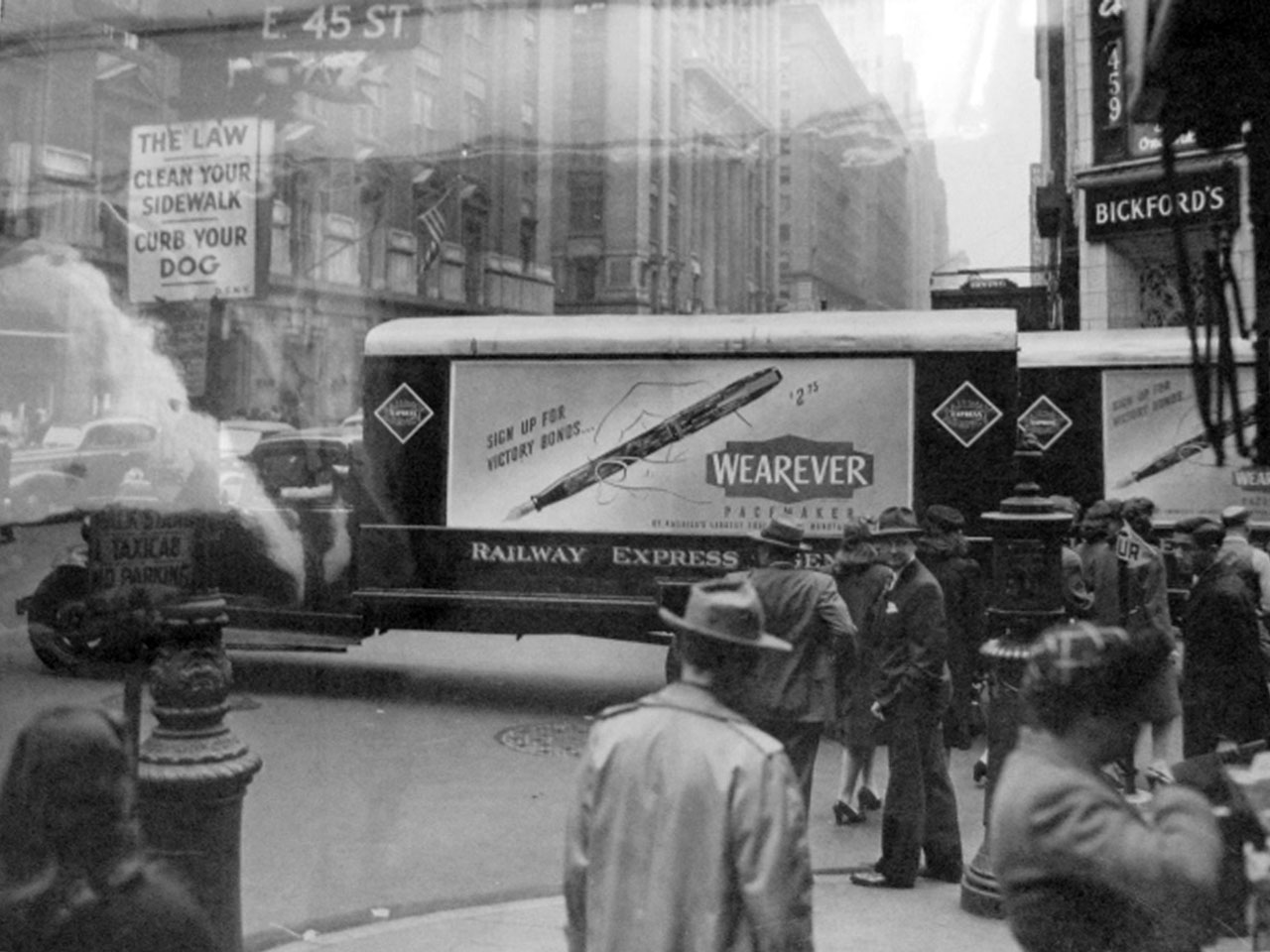 Wearever Post World War II Advertisement on Railway Express Agency Truck
Wearever Post World War II Advertisement on Railway Express Agency Truck
In the early to mid-20th century, before FedEx and UPS, the Railway Express Agency was the way express packages were shipped. Trains were the fastest shipping method as air freight was still developing as a business. The express package business had its start in 19th century and included such modern names as American Express and Wells Fargo. As the business grew and consolidated, service complaints rose, so in 1914 the Interstate Commerce Commission, which already oversaw the railroad industry, added oversight of express package services. When the railroads were nationalized during World War I, the American Railway Express Company was created and in 1929, it was transferred to the Railway Express Agency, jointly owned by 86 railroads to manage the express package business. The Railway Express Agency was not an actual railroad, but had offices all over the USA and directly handled express packages that traveled by train including local pickup and delivery by truck. Just like city busses, a business could buy advertising space on the sides of those Railway Express Agency trucks.
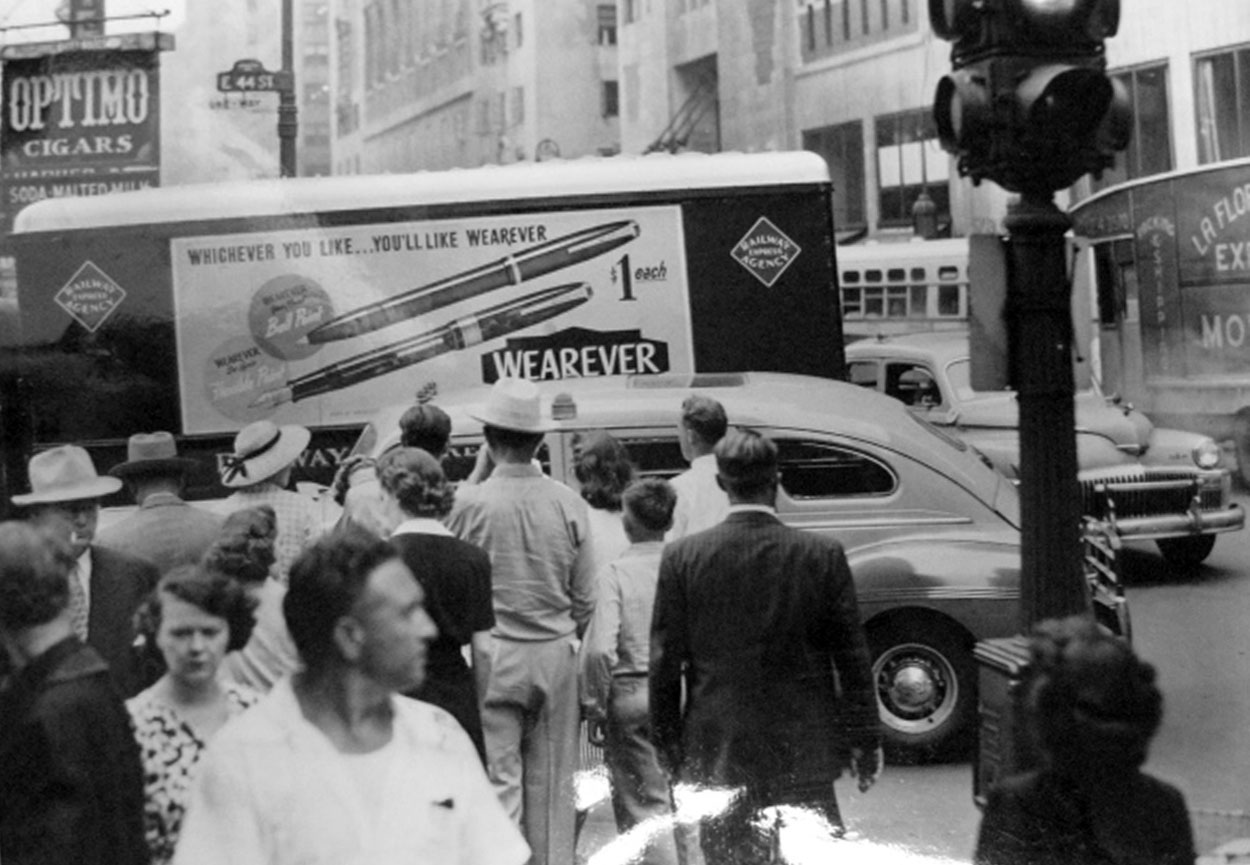 Wearever Post World War II Advertisement on Railway Express Agency Truck
Wearever Post World War II Advertisement on Railway Express Agency Truck
Dating these photos turned out less tricky than I thought. All the clues were there, starting with the store display photo. It includes a counter card showing the cover of the September 17, 1945 issue of Life magazine with General Douglas MacArthur on the cover. The display also shows a counter card of a Wearever advertisement that appeared in Life. This particular advertisement, showing a striped Wearever Pacemaker pen and set with pencil does not appear in the September 17, 1945 issue but in the March 25, 1946 issue, dating the card to sometime in 1946. The pens on display are too hard to make out, but the photo does help to show the type of display boxes from that year and the round clip tags on the pens.
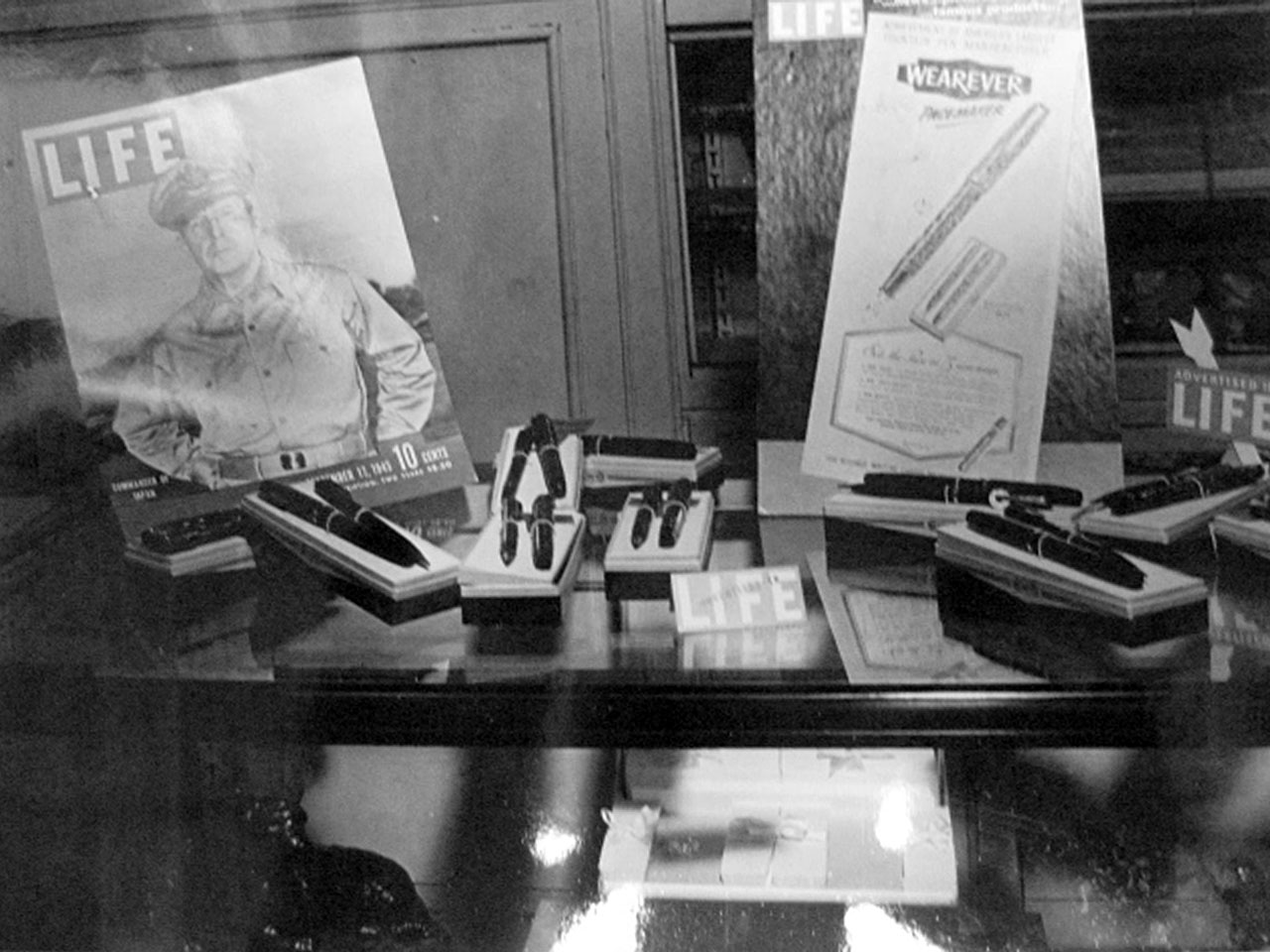 Wearever Post World War II Store Display
Wearever Post World War II Store Display
The Railway Express Agency delivery truck photos show three different pens. The second photo in this article shows the Pacemaker model, easy to read in the advertisement. The Pacemaker was heavily advertised by Wearever and featured a 14 karat gold nib for only $2.75 and a matching set with pencil for $3.75. The pen came in maroon, golden brown and green striped plastic or solid black. Wearever frequently advertised the Pacemaker, Zenith and De Luxe models from 1945 to 1947, but the other two Railway Express Agency delivery truck photos don't appear in any of the major magazine advertisements I could find. Fortunately, I had a page from a 1947 Montgomery Ward catalog that showed both of these two pens, though they are unnamed.
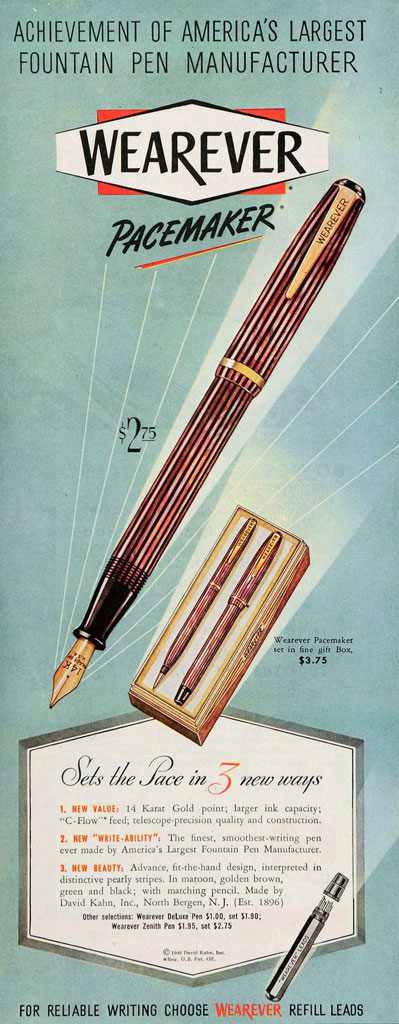 Wearever 1946 Pacemaker Advertisement
Wearever 1946 Pacemaker Advertisement
The pen set in the very first photo above, shown with the slogan, "The Set To Get," looks like the precurser to the early to mid 1950s Pennant. The cap appears identical to the Pennant, with a stainless steel sleeve over a plastic cap and featuring a gold plated clip and lever. The cap appears to lack the coin edge base of the Pennant cap. The plastic part of the cap color matches the section and barrel. The nib section is quite tapered, ending with a small non-hallmarked 14 karat gold medium nib. The pen was offered in black or burgundy and sold for $1.95 with the set with matching pencil selling for $2.75.
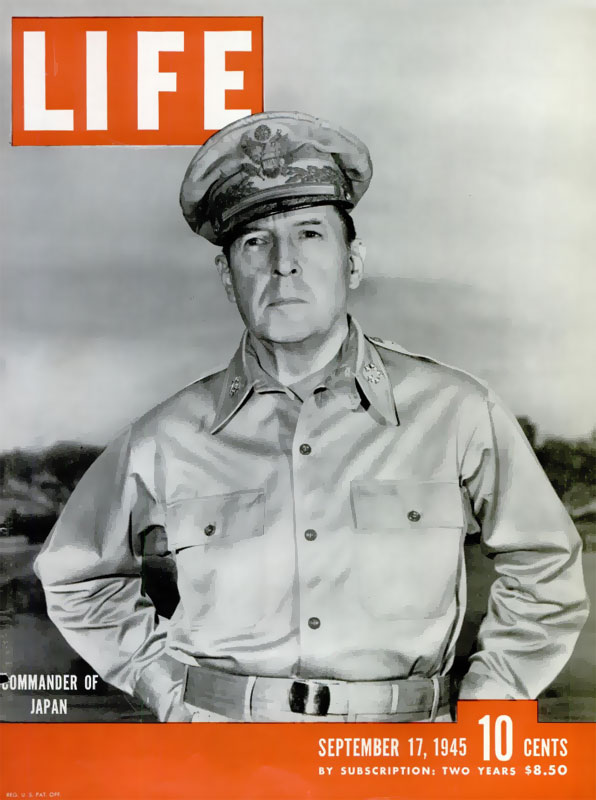 Cover of September 17, 1945 Life Magazine
Cover of September 17, 1945 Life Magazine
You never know what you'll find on the side of a truck
The pen set in the third photo, with the slogan, "Whichever You Like . . . You'll Like Wearever," is a less expensive pen offered with a gold plated stainless steel medium nib in black or dark green striped plastic. The pen had gold plated trim including the clip and wide cap band. It sold for $1.00 and the set with matching pencil sold for $1.75. What's really interesting is the Railway Express Agency delivery truck photo shows a matching ballpoint pen, also for $1.00, a writing instrument I was completely unaware of. This photo shows that Wearever was offering a capped ballpoint pen as early as 1946 or 1947, priced the same as the matching fountain pen, a pricing strategy also used by Sheaffer and Eversharp.
 Railway Express Agency Logo
Railway Express Agency Logo
These four photos bring some new information and questions about Wearever pen models. First, the Pennant had a forerunner pen advertised as early as 1947. Change the nib to the Pennant's fake overlay nib and add a coin edge to the cap base and the pen evolves into the Pennant. Second, and much more surprising, is that Wearever had entered the ballpoint pen business as early as 1946 or 1947. It's no surprise to me that I have never yet seen a Wearever ballpoint from that period, nor much in the way of advertising. With the Eversharp CA ballpoint debacle, where returned $8.75 to $15 pens nearly bankrupted the Eversharp pen company, I would imagine it's possible that Wearever may have re-thought the ballpoint business and exited. We don't know, yet, but it would be interesting to find out!
Acknowledgement
Thanks to Tom Heath for providing the photos of the Railway Express Agency and Wearever store display photos and background.
References
Life Magazine, Cover, September 17, 1945
Montgomery Ward Catalog, page 57, 1947
Railway Express Agency, Wikipedia
Wearever advertisement, Life, March 25, 1946
Wearever advertisement, Life, April 15, 1946
Wearever advertisement, Life, July 8, 1946
Wearever advertisement, Life, August 26, 1946
Wearever advertisement, Life, September 16, 1946
Wearever advertisement, Life, December 9, 1946
Interact
Comments on this article may be sent to the author, Jim Mamoulides


